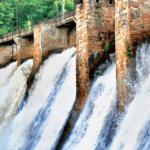The recently released Economic Survey – FY 2015-16 paints a worrisome picture of the economy. For the second time in the last 15 years, Nepal’s GDP growth rate has slipped below one percent, just narrowly escaping contraction. During the same period, the country’s growth rate averaged a mere 3.5%, which immediately reminds one of India’s struggles with the ‘Hindu rate of growth’. Perhaps this is Nepal’s very own, albeit not entirely home-grown ‘socialism oriented rate of growth’.
Times of economic hardships often spark epoch-defining reforms and for a country that has been battered by multiple earthquakes and bruised by the months-long blockade, there is perhaps no better time for ushering in the second generation of reforms than now.
Power Up the Economy
The four-and-a-half-month-long blockade exposed just how vulnerable the country is in terms of energy security despite having immense potential to power up the entire country and beyond. Merely declaring an energy emergency will not bear fruit if the sense of urgency in harnessing hydropower potential and scaling up petroleum products’ storage calms down as soon as crises ease, and if the momentum thus created is stalled by cumbersome bureaucratic hassles and political meddling.
Without power, neither will the country be able to attract large manufacturing companies to set up their plants here nor will its dependence on trade partner(s) come down anytime soon. Energy drives all other sectors of the economy, the most important among them being infrastructure development. The energy security discourse rekindled by the blockade, therefore, needs to remain in the mainstream and should continue to nudge the stakeholders involved to take steps forward.
Resurrect the Manufacturing Sector
The extent of the impact of natural and man-made calamities on the industrial sector in the past several months is visible from the fact that the Economic Survey has projected a staggering 6.3% negative growth for the sector.
Fuel crisis and border blockade which choked the import of important industrial raw materials and machinery coupled with the burden of having to bear demurrage charges for goods stalled at Kolkata port together dealt a massive blow to the industrial sector this fiscal year.
This has significantly eroded investors’ confidence which can have long-term implications for the economy. In order to renew investors’ confidence, the government should take bold steps such as ensuring the maximum possible energy supply to manufacturing units and tax holidays for a certain fixed number of years for companies investing more than a certain threshold amount. Tax rebates for profitable and export-oriented industries could be a plausible incentive mechanism as well.
As the percentage of the population engaged in agriculture is declining and as the service sector struggles to produce a large number of jobs for all skill segments, driving up the manufacturing sector will be the key to reaping real economic returns and easing the country’s chronic unemployment problem.
Address Rural Discontent
The past couple of years have been disappointing in terms of agricultural growth. In FY 2014-15 the sector witnessed a 0.8% growth whereas the projection for FY 2015-16 stands at 1.3%. The national per capita income is set to decline from USD 775 in FY 2014-15 to USD 766 in FY 2015-16. Poor rainfall coupled with an energy crisis that impeded lift-irrigation and a crippling shortage of chemical fertilizers has resulted in projections of a drop in production for some of the main cereal crops. Not only will it have a direct impact on the income of the farmers but will also pose serious questions about food security in a disaster-prone country.
In order to lift a large section of the population out of poverty and to boost per capita income, it is imperative that the agriculture sector witness boom for sustained periods of time. The most important ingredient for such outcome will be an extensive expansion of irrigation, extending agricultural research and training programs throughout the country, improving market access for farm produce through greater transport connectivity, and greater financial inclusion of rural populace including expansion of agricultural insurance base.
The blend of natural and man-made calamities in the last several months coupled with poor agricultural growth has made the rural population in the country increasingly frustrated with the state apparatus. As the vicious cycle of low output and low investment looms over the horizon after two subsequent years of low agricultural growth, the government must take urgent steps to mitigate these challenges before discontent ferments into disharmony.
Perceptions Matter
Finally, while key economic indicators mirror the state of the economy, perceptions of the populace regarding the health of the economy and its future are also key elements that help orient the economy, either upwards or otherwise. For too long, our fatalistic attitude has prevented us from questioning why we’re falling behind in the race for prosperity which afforded those responsible with the opportunity to run scot-free. Or perhaps, we were not asking the right questions so far. The drive for economic growth and prosperity should grow upwards from grassroots to power centers. It is not a blessing bestowed from top to bottom as is often perceived in this part of the world.
Tejeshwi served as a NEF Fellow during 2015-16. He has a master’s degree in international economic policy from SciencesPo – Paris School of International Affairs and has previously worked at the International Labour Organisation’s Regional Office for Asia and the Pacific covering areas such as labour market policies, wages and employment, future of work, leveraging technology as a driver of formality, and labour force surveys for countries in the Asia Pacific region. At present, he works as an economist at the Embassy of Switzerland in Nepal supporting the employment and income domain of Swiss Cooperation in Nepal with a focus on private sector development, innovative development finance, and SME-led growth. Tejeshwi also serves as the focal point for Swiss-Nepal trade and investment relations promoting greater cross-border economic cooperation.





